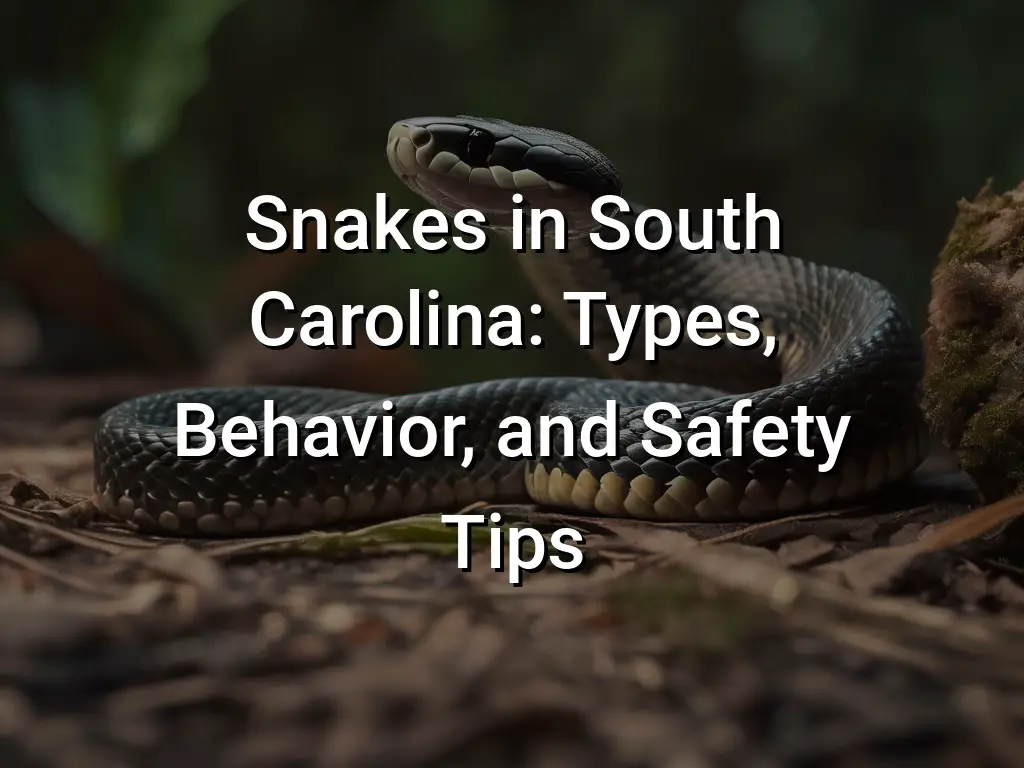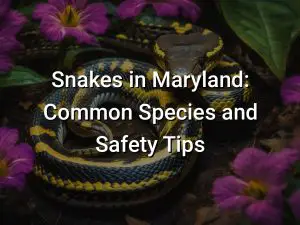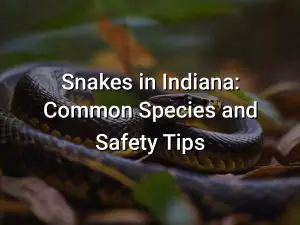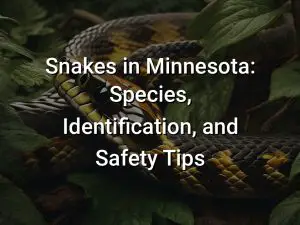Snakes in South Carolina: Types, Behavior, and Safety Tips

Snakes in South Carolina may not be everyone’s favorite topic, but they play an important role in the ecosystem and understanding them can help ensure our safety and their well-being. From venomous species like the Copperhead to harmless ones like the Corn Snake, South Carolina is home to a variety of snakes with diverse characteristics and behaviors.
In this article, we’ll take a closer look at the types of snakes you might encounter in South Carolina, their behavior patterns, and important safety tips to keep in mind when dealing with these slithering creatures. So whether you’re fascinated by snakes or simply want to stay informed, read on to discover more about the snakes of South Carolina.
Quick Links
Types of Snakes in South Carolina
South Carolina is home to a diverse range of snakes, including both venomous and non-venomous species. It’s important to be able to identify different types of snakes to ensure your safety and understand their behavior. Here are some of the common snakes you may encounter in South Carolina:
- Copperhead: The Copperhead is a venomous snake that is known for its distinctive copper-colored head. It is often found near bodies of water and wooded areas.
- Rattlesnakes: South Carolina is home to several species of rattlesnakes, including the Eastern Diamondback Rattlesnake, Timber Rattlesnake, and Pigmy Rattlesnake. These snakes have rattles on their tails and should be treated with caution.
- Eastern Coral Snake: The Eastern Coral Snake is a small, venomous snake with bright red, yellow, and black bands. It is not commonly encountered but can be found in certain areas of South Carolina.
- Eastern Rat Snake: The Eastern Rat Snake, also known as the Black Rat Snake, is a non-venomous snake that can grow quite large. It is often found in wooded areas and is known for climbing trees.
- Eastern King Snake: The Eastern King Snake is a non-venomous snake that is known for its striking black and yellow or black and white bands. It is a constrictor and is often found near water sources.
These are just a few examples of the snakes you may encounter in South Carolina. It’s important to remember that snakes play an important role in the ecosystem and most are not a threat to humans if left undisturbed. However, if you encounter a snake and are unsure of its species or behavior, it is best to give it a wide berth and leave it alone. For your safety, it is also recommended to familiarize yourself with the appearance of venomous snakes and know how to respond in case of a snake bite.
Behavior of Snakes in South Carolina
Snakes in South Carolina exhibit a variety of behaviors that are important to understand for those who encounter them. While snakes can seem intimidating, it’s essential to remember that most snakes in South Carolina are non-venomous and play a vital role in the ecosystem. Here are some common behaviors exhibited by snakes in the state:
- Basking: Snakes in South Carolina often bask in the sun to regulate their body temperature. You may find them coiled up on rocks, logs, or open areas during sunny days.
- Hunting: Snakes are predators and play a crucial role in controlling rodent populations. They use various hunting techniques, including ambush and active pursuit, to catch their prey.
- Sight and Smell: While snakes have poor eyesight, they have an excellent sense of smell. They use their tongues to collect scent particles and transfer them to a specialized organ called the Jacobson’s organ, which helps them locate prey and potential mates.
- Movement: Snakes in South Carolina can move in a variety of ways, including slithering, sidewinding, and climbing. Some species are excellent climbers and can scale trees and vegetation.
- Defense Mechanisms: Snakes have various defense mechanisms to protect themselves. These include hissing, rattling (in the case of rattlesnakes), mimicking venomous species’ appearance, and biting as a last resort.
- Habitat and Behavior: Different snake species have specific habitat preferences and behaviors. Some prefer aquatic environments, while others thrive in grasslands or forested areas. Understanding these preferences can help avoid encounters.
It’s important to remember that snakes typically prefer to avoid humans and will only attack if they feel threatened. If you come across a snake in South Carolina, it is best to leave it alone and give it space. By understanding snake behavior and taking precautions, you can coexist safely with snakes in the state.
Safety Tips for Dealing with Snakes in South Carolina
If you encounter a snake in South Carolina, it’s important to remember these safety tips to ensure your well-being:
- Stay calm and keep your distance. Most snake bites occur when people try to handle or kill snakes, so it’s best to maintain a safe distance and avoid any unnecessary interactions.
- Identify the snake if possible. While it’s not necessary to determine the exact species, having a general idea of whether the snake is venomous or non-venomous can be helpful. Remember, many snakes in South Carolina are harmless.
- Do not attempt to handle the snake. Even non-venomous snakes can bite if they feel threatened. It’s always best to leave snake handling to trained professionals.
- Keep your pets on a leash and away from snakes. Dogs, in particular, are curious and may approach a snake, putting themselves at risk for a potential bite.
- Stay on marked trails and avoid tall grass or dense underbrush where snakes may be hiding. Stick to well-traveled areas to minimize your chances of encountering a snake.
- Wear appropriate footwear and clothing. When hiking or spending time outdoors in snake-prone areas, wear closed-toe shoes and long pants to protect yourself from potential bites.
- Be cautious around water sources. Snakes are often found near bodies of water, so be extra vigilant when swimming, fishing, or boating.
- If you are bitten by a snake, seek immediate medical attention. Even non-venomous snake bites can lead to infections or allergic reactions. Contact local emergency services or go to the nearest hospital as soon as possible.
Remember, snakes play an important role in the ecosystem and are generally not aggressive towards humans unless provoked. By following these safety tips, you can coexist with snakes in South Carolina while minimizing any potential risks.
Conclusion
Snakes in South Carolina can be found in a variety of habitats and exhibit a wide range of behaviors. It’s important to be aware of the different types of snakes in the area and understand their behavior to ensure your safety when coming across them.
By following the safety tips outlined in this article, such as staying calm and giving snakes their space, you can greatly reduce the risk of snake encounters and bites. Remember to always be cautious when hiking or exploring natural areas and educate yourself on the specific snakes that are common in South Carolina. With the right knowledge and precautions, you can safely enjoy the outdoors and coexist with the diverse snake population in the state.







